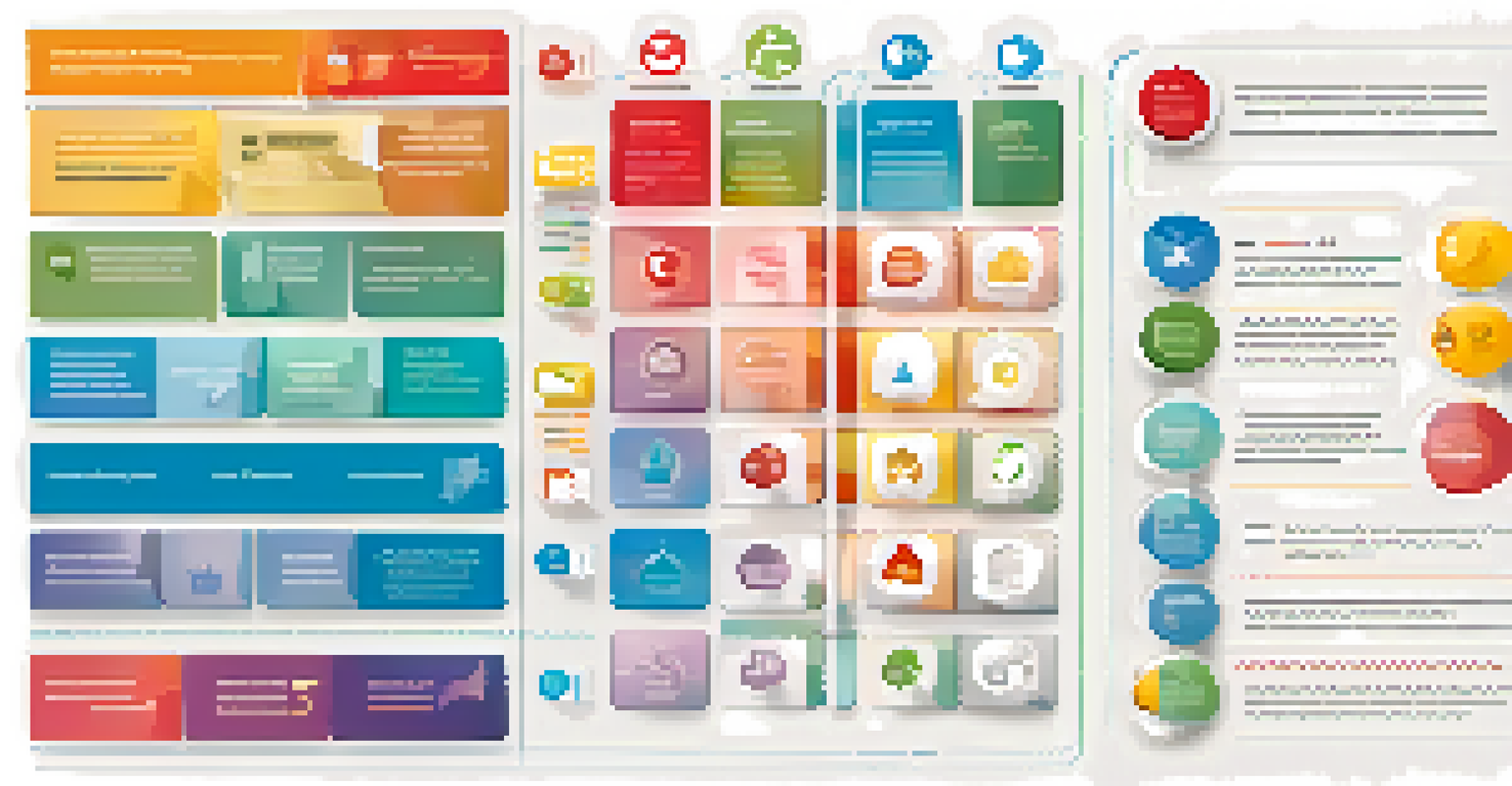Utilizing Feedback Systems to Improve Patient Engagement Efforts

The Importance of Patient Engagement in Healthcare
Patient engagement is more than just a buzzword; it’s a critical factor in improving health outcomes. When patients are actively involved in their care, they tend to adhere to treatment plans better and make informed decisions about their health. This involvement can lead to reduced hospital readmissions and increased patient satisfaction, which are key metrics for healthcare providers.
Engaged patients are more likely to adhere to treatment plans, leading to improved health outcomes.
Moreover, engaging patients fosters a partnership between them and their healthcare providers. This collaboration not only empowers patients but also allows providers to gain insights into their patients' preferences and needs. Ultimately, when patients feel valued and heard, they are more likely to participate meaningfully in their care.
Incorporating feedback systems into patient engagement strategies can significantly enhance this relationship. By actively seeking patient input, healthcare organizations can tailor their services to better meet the needs of their patients, creating a cycle of continuous improvement.
What Are Feedback Systems in Healthcare?
Feedback systems in healthcare refer to structured methods for collecting patient opinions, experiences, and suggestions. These systems can take many forms, including surveys, focus groups, and digital platforms that allow for real-time feedback. Each method provides valuable insights into the patient experience and helps identify areas for improvement.

For example, a simple post-visit survey can capture a patient’s immediate thoughts about their care, while a more comprehensive focus group might explore deeper issues affecting patient satisfaction. By analyzing this feedback, healthcare providers can make informed decisions that enhance the quality of care.
Engagement Improves Health Outcomes
Active patient engagement leads to better adherence to treatment plans and overall health satisfaction.
Furthermore, these systems help create a culture of transparency and openness. When patients see that their feedback leads to tangible changes, it fosters trust and encourages them to engage more actively in their care journey.
How to Implement Feedback Systems Effectively
Implementing effective feedback systems begins with defining clear objectives. What specific aspects of patient engagement are you looking to improve? By setting measurable goals, healthcare organizations can tailor their feedback systems to address particular needs and track progress over time.
Feedback is the breakfast of champions, and it builds trust and enhances patient engagement.
Next, it's crucial to choose the right tools for collecting feedback. Digital platforms are becoming increasingly popular due to their accessibility and ease of use. However, traditional methods like in-person interviews or paper surveys can still be effective, depending on the patient population and context.
Finally, ensure that there is a clear process for analyzing and acting on the feedback collected. Simply gathering data without follow-up can lead to disillusionment among patients. By demonstrating that their feedback leads to real changes, you’ll encourage ongoing engagement.
Using Technology to Enhance Feedback Collection
Technology plays a pivotal role in modern feedback systems. With the rise of mobile apps and online portals, patients can share their experiences conveniently and promptly. This immediacy can lead to more accurate data, as patients provide feedback while their experiences are fresh in their minds.
Moreover, technology allows for creative ways to engage patients in the feedback process. For instance, interactive platforms that gamify feedback can make it more appealing for patients to participate. This not only increases response rates but also enriches the quality of the data collected.
Feedback Systems Enhance Care Quality
Implementing structured feedback systems allows healthcare providers to gather insights that drive improvements in patient care.
Additionally, leveraging data analytics tools can help healthcare organizations sift through large volumes of feedback. This analysis can reveal trends and patterns that might not be immediately obvious, enabling more targeted interventions to boost patient engagement.
Analyzing Patient Feedback for Actionable Insights
Once feedback is collected, the next step is analysis. This involves categorizing the feedback into themes or trends to identify common issues or strengths. For example, if multiple patients express dissatisfaction with wait times, it signals a clear area for improvement.
Using qualitative and quantitative analysis can provide a comprehensive view of patient sentiments. While quantitative data (like ratings) gives a snapshot, qualitative comments offer deeper insight into patient feelings and experiences. Both are essential for understanding the full picture.
Ultimately, the goal of analyzing feedback is to derive actionable insights. By prioritizing findings based on their impact and feasibility, healthcare providers can implement changes that enhance patient engagement and overall care quality.
Closing the Loop: Communicating Changes to Patients
After implementing changes based on patient feedback, it’s vital to communicate these improvements back to patients. This 'closing the loop' process shows patients that their voices matter and reinforces their trust in the healthcare system. Regular updates through newsletters, social media, or in-person discussions can help keep patients informed.
Moreover, sharing success stories related to the feedback can further enhance engagement. For example, if a clinic improves its appointment scheduling based on patient suggestions, sharing this change can motivate other patients to provide feedback, knowing it leads to real outcomes.
Tech Innovations Boost Feedback Collection
Utilizing technology in feedback systems makes it easier for patients to share experiences, leading to richer data and insights.
This communication not only fosters a stronger relationship between patients and providers but also encourages a culture of continuous improvement. When patients see that their input leads to positive changes, they are more likely to engage in future feedback opportunities.
The Future of Patient Engagement Through Feedback
Looking ahead, the role of feedback in patient engagement is set to expand. As healthcare continues to evolve with technology, we can expect to see more sophisticated feedback systems that utilize artificial intelligence and machine learning to analyze patient sentiments in real-time. This advancement could lead to even more personalized care experiences.
Additionally, as telehealth becomes more prevalent, incorporating feedback systems into these platforms will be essential. Patients must feel engaged and valued, regardless of whether they are receiving care in-person or virtually. Feedback will play a crucial role in shaping these experiences.

Ultimately, the future of patient engagement hinges on a commitment to listening and responding to patients. By utilizing feedback systems effectively, healthcare organizations can not only improve patient satisfaction but also enhance health outcomes, creating a win-win for everyone involved.